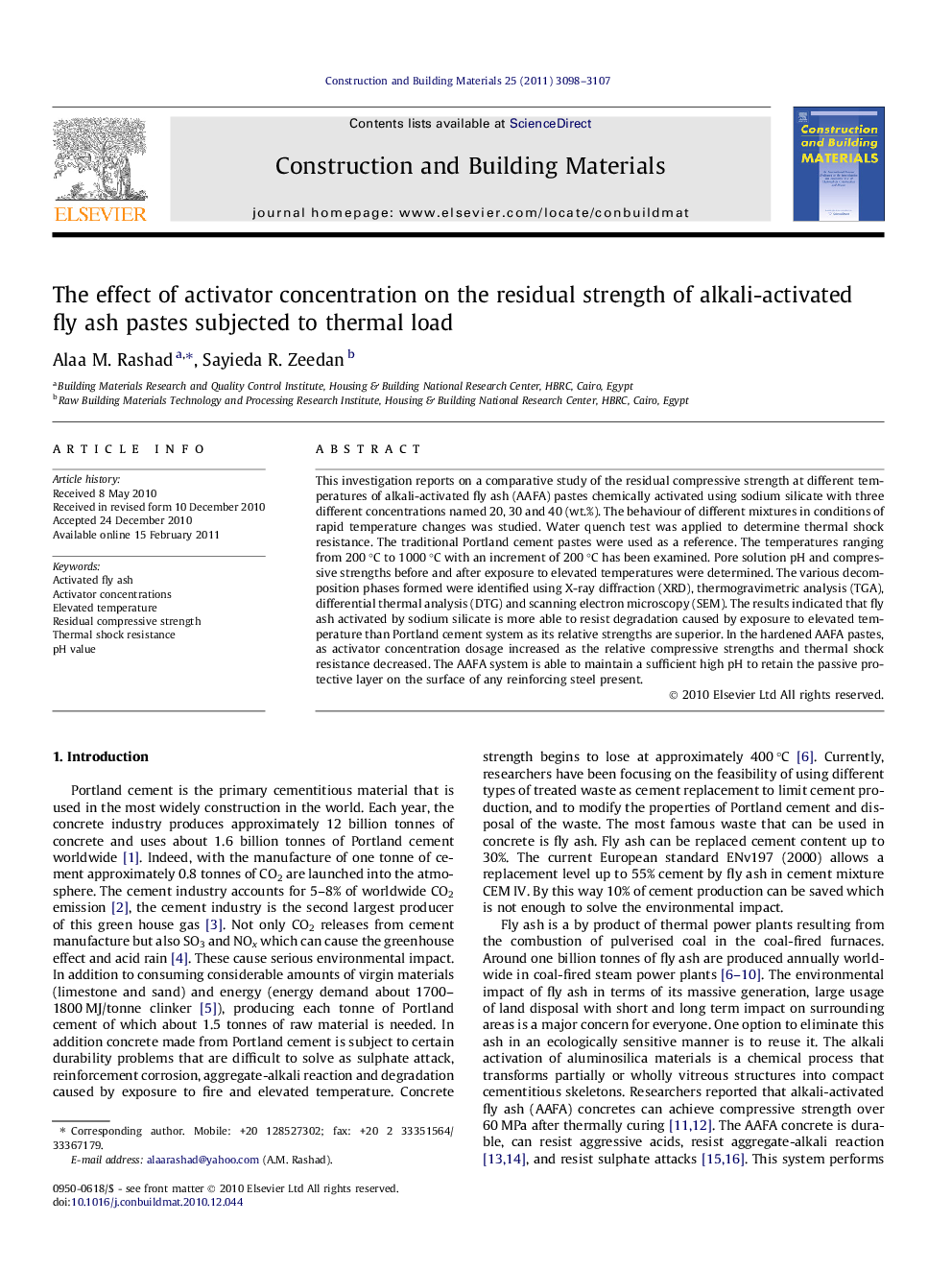| کد مقاله | کد نشریه | سال انتشار | مقاله انگلیسی | نسخه تمام متن |
|---|---|---|---|---|
| 259243 | 503630 | 2011 | 10 صفحه PDF | دانلود رایگان |

This investigation reports on a comparative study of the residual compressive strength at different temperatures of alkali-activated fly ash (AAFA) pastes chemically activated using sodium silicate with three different concentrations named 20, 30 and 40 (wt.%). The behaviour of different mixtures in conditions of rapid temperature changes was studied. Water quench test was applied to determine thermal shock resistance. The traditional Portland cement pastes were used as a reference. The temperatures ranging from 200 °C to 1000 °C with an increment of 200 °C has been examined. Pore solution pH and compressive strengths before and after exposure to elevated temperatures were determined. The various decomposition phases formed were identified using X-ray diffraction (XRD), thermogravimetric analysis (TGA), differential thermal analysis (DTG) and scanning electron microscopy (SEM). The results indicated that fly ash activated by sodium silicate is more able to resist degradation caused by exposure to elevated temperature than Portland cement system as its relative strengths are superior. In the hardened AAFA pastes, as activator concentration dosage increased as the relative compressive strengths and thermal shock resistance decreased. The AAFA system is able to maintain a sufficient high pH to retain the passive protective layer on the surface of any reinforcing steel present.
Research highlights
► AAFA is more resistant to elevated temperatures than traditional Portland cement.
► Activator concentration has a marked influence on initial and residual strength after heating.
► As the activator concentration increased as the relative residual strength decreased.
► As the activator concentration increased as the thermal shock resistance decreased.
► As the activator concentration increased as pH increased.
Journal: Construction and Building Materials - Volume 25, Issue 7, July 2011, Pages 3098–3107